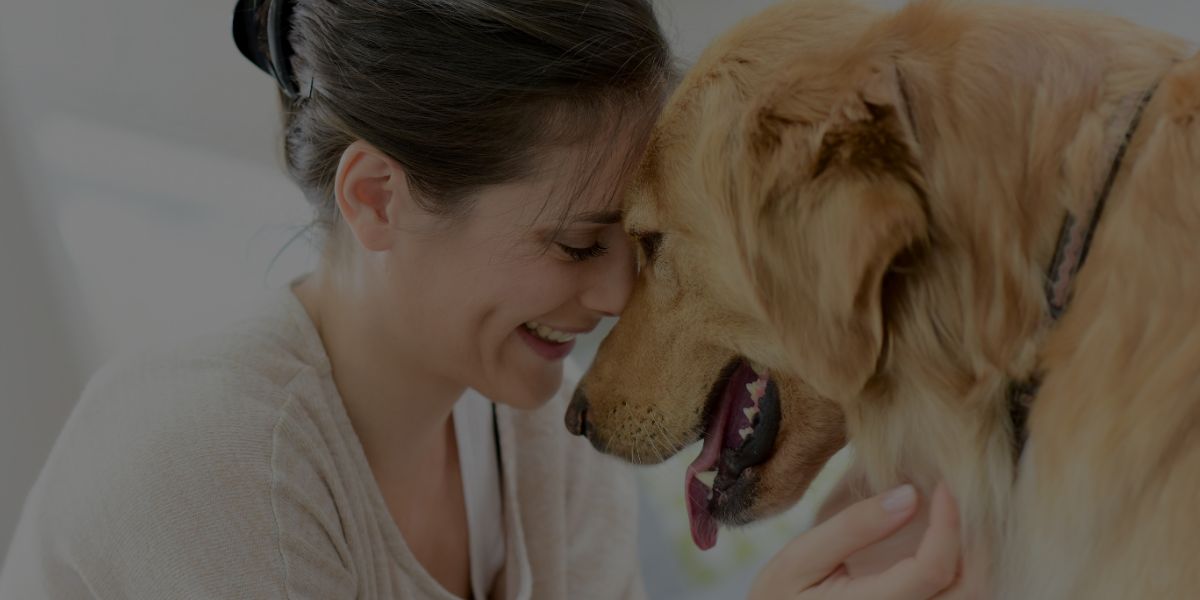Thinking of a career in professional dog training? It’s not as easy as it may seem! There are many skills and qualities that you need to possess in order to be successful. In this article, we’re going to reveal the top 20 skills you need to become a dog trainer and make it in the pets industry.
Plus, we’ll also provide some tips on how to acquire these skills. So, if you are serious about becoming a dog trainer, then read on!
Before We Get Started: Should YOU become a dog trainer? This article will help you find out!
20 Skills You Need To Become a Dog Trainer
In order to thrive as a dog trainer, you’ll need to develop a wide range of skills. Here are the top 20 skills that you need to have…
Skill #1: Understanding Canine Communication
What This Is
Canine communication refers to the ability to understand how dogs communicate with each other and with humans. Examples of canine communication can include:
- Body language (e.g. tail wagging, ears perked up, whale eye)
- Vocalizations (e.g. barking, whining, growling)
- Scent (e.g. urine marking, sniffing)
- Action (play bows, tail chasing)
Why You Need This Skill as a Dog Trainer
As a dog trainer, you’ll need to be able to understand the different ways that dogs communicate. This is important because it will allow you to better understand what your client’s dog is trying to say and how he’s feeling. Furthermore it’ll also allow you to more effectively communicate with your client’s dog, so they can properly understand what it is you want from them.
How To Develop This Skill
You can start to develop your canine communication skills by observing dogs in your everyday life. Pay attention to the different ways they communicate with each other and with humans. You can also read books or online articles about canine communication, and attend seminars or workshops given by experts in the field.
Skill #2: Understanding Canine Behavior
What This Is
Canine behavior refers to the way dogs behave in different situations. Common examples of canine behavior are similar to the ones listed above for canine communication.
Pro Tip: Discover how much you currently know about dog behavior by taking this short quiz!
Why You Need This Skill as a Dog Trainer
As a dog trainer, you’ll need to have a good understanding of canine behavior. This is important because it will allow you to better understand your client’s dog and why he behaves the way he does. Not to mention, it’ll also allow you to more effectively train your client’s dog by using techniques that are based on how dogs learn and behave.
How To Develop This Skill
You can start to develop your understanding of canine behavior by observing dogs in different situations. Pay attention to the different ways they behave and try to identify any patterns or common themes. You can also:
- Read books or online articles about canine behavior
- Attend seminars or workshops given by experts in the field
- Take a Dog Training certification course, such as the one offered by QC Pet Studies (we’ll talk more about this later)
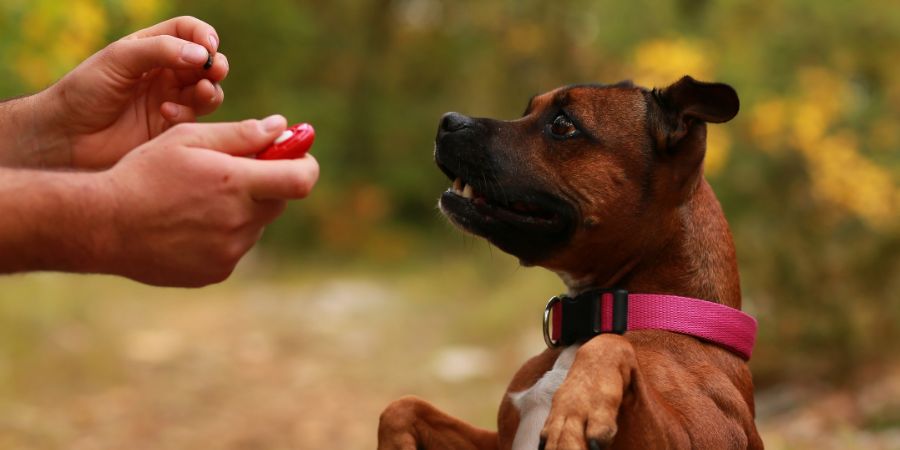
Skill #3: Patience
What This Is
Patience is the ability to remain calm and not get angry, even when things are not going as planned. It’s important to note that patience is a virtue, not a skill. However, it is still something that you can (and should) work on developing.
Why You Need This Skill as a Dog Trainer
As a dog trainer, you’ll need to be patient with both your clients’ dogs and your clients themselves. Dogs can be frustrating at times, and they don’t always learn as quickly as we would like them to.
Meanwhile, some clients may not be as invested in their dog’s training as you are. In these situations, it’s important to be able to remain calm and patient. Otherwise, you run the risk of losing your temper or becoming frustrated – which will only make the situation worse.
How To Develop This Skill
You can start to develop your patience by practicing meditation or mindfulness. Both of these practices can help you to better control your emotions and reactions. You can also try to find ways to de-stress in your everyday life, such as taking a break from work or going for a walk outside.
Skill #4: Emotional Control
What This Is
Emotional control refers to the ability to keep your emotions in check, even when you’re feeling stressed or overwhelmed. It’s similar to patience in that it’s a virtue, not a skill. However, it is still something that you can (and should) work on developing.
Why You Need This Skill as a Dog Trainer
As a dog trainer, you’ll need to be able to control your emotions, even when things are not going as planned. This is important because it will allow you to remain calm and level-headed in stressful or challenging situations. Not to mention, it’ll also prevent you from taking out your frustrations on your clients’ dogs (which is never a good idea).
How To Develop This Skill
In addition to meditation and mindfulness, other ways you can develop emotional control include:
- Practicing deep breathing exercises
- Identifying your triggers and learning how to avoid them
- Spending time with positive, upbeat people (both at work and in your personal life)
Skill #5: Client Communication Skills
What This Is
Client communication skills refer to the ability to effectively communicate with your dog training customers. This includes being able to listen to their concerns, understand their needs, and explain things in a way that they can understand.
Why You Need This Skill as a Dog Trainer
As a dog trainer, you’ll need to be able to communicate effectively with your clients. This is important because it will allow you to build strong relationships with them. It’ll also allow you to better understand their dogs and what they’re hoping to achieve through training. Furthermore, effective communication will make it easier to resolve any conflicts or disagreements that may arise.
How To Develop This Skill
Here are some tips for developing strong client communication skills:
- Be an active listener – Focus on what the other person is saying, without interrupting them.
- Try to see things from their perspective – This will help you to better understand their needs and concerns.
- Use simple, easy-to-understand language – Avoid using jargon or technical terms that they may not be familiar with.
Pro Tip: Discover how to get more clients for your dog training business!
Skill #6: Conflict Resolution Skills
What This Is
Conflict resolution skills refer to the ability to effectively resolve disagreements or disputes. This includes being able to mediate between two parties, find common ground, and come to a mutually-agreeable solution.
Why You Need This Skill as a Dog Trainer
As a dog trainer, you’ll need to be able to resolve conflicts effectively. This is important because it will allow you to maintain positive relationships with your clients. It’ll also prevent small disagreements from escalating into larger problems. Conflict resolution skills can especially come in handy when dealing with difficult clients or dogs.
How To Develop This Skill
Here are some tips for developing strong conflict resolution skills:
- Practice active listening – As we mentioned above, active listening is key to resolving conflicts effectively.
- Avoid escalations – If someone is getting angry, try to stay calm and avoid getting defensive.
- Focus on finding a solution – Rather than placing blame, try to find a way to move forward.
For more conflict resolution strategies, we recommend this HubSpot article!
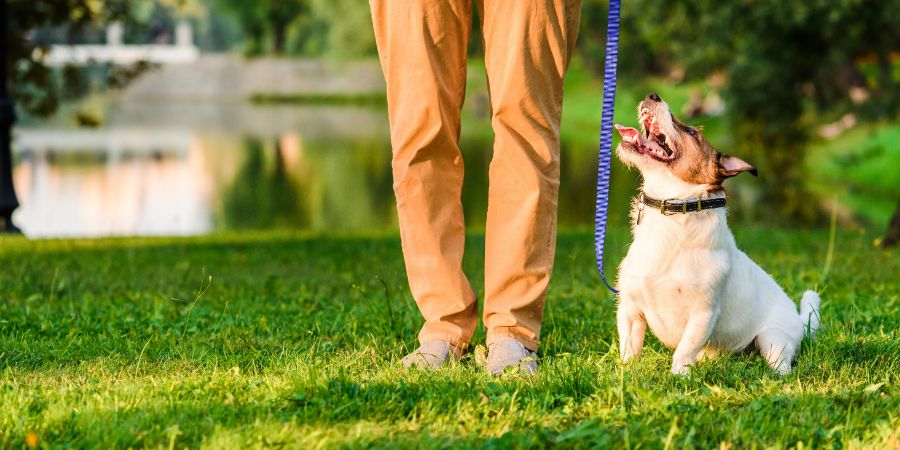
Skill #7: Understanding Positive Reinforcement Training Methods
What This Is
Positive reinforcement training is a type of animal training that focuses on rewarding desired behaviors. This includes giving the animal a treat, petting them, or providing some other form of positive reinforcement when they display the desired behavior.
Pro Tip: Learn the ins and outs of positive reinforcement training
Why You Need This Skill as a Dog Trainer
As a dog trainer, it’s important that you’re familiar with positive reinforcement training methods. This is because this is one of the most common (and effective) types of dog training. Furthermore, many clients will expect you to use this type of training with their dogs.
How To Develop This Skill
Here are some tips for developing your positive reinforcement training skills:
- Read up on the subject – There are many excellent books and articles on positive reinforcement training.
- Get some hands-on experience – Try using positive reinforcement training with your own dog or a friend’s dog.
- Observe experienced trainers – If you know any experienced dog trainers, watch them train and take note of their techniques.
- Take a professional dog training course – Many professional dog training courses, such as the one offered at QC Pet Studies, cover positive reinforcement training methods.
Skill #8: Knowing To Avoid Negative Reinforcement Training Methods
What This Is
Negative reinforcement training is a type of animal training that focuses on punishing undesired behaviors. This includes scolding the animal, using physical punishment, or withholding rewards when they display the undesired behavior. As a general rule of thumb, negative reinforcement methods are discouraged – and even looked down upon – by professional dog trainers and other pet experts.
Why You Need This Skill as a Dog Trainer
As a dog trainer, it’s critical that you know how to train your clients’ dogs WITHOUT resorting to negative reinforcement measures. This is because this type of training can be ineffective and even harmful to dogs. Furthermore, many clients will not want you to use this type of training with their dogs, as they’ll see it as animal abuse (and rightfully so!).
How To Develop This Skill
The easiest way to develop this skill is to first do your research and properly understand why negative reinforcement methods are discouraged. Once you have a good understanding of the subject, the most effective way to continue developing this skill is to instead learn positive reinforcement methods instead.
Skill #9: Classroom Management
What This Is
Classroom management skills refer to the ability to effectively manage a group of students in a classroom setting. This includes managing students’ behavior, as well as teaching them the material in an engaging and effective manner.
Why You Need This Skill as a Dog Trainer
In this line of work, you’ll often be working with groups of dogs (and their owners) at once. Therefore, it’s important that you know how to manage multiple dogs at once – and keep them all under control! What’s more, you’ll need to be able to teach your clients’ dogs the desired behaviors in an engaging and effective manner.
How To Develop This Skill
Here are some tips for developing strong classroom management skills:
- Get some experience working with groups of dogs – The best way to learn this skill is by getting some hands-on experience working with multiple dogs at once. Try volunteering at a local animal shelter, or see if any of your friends or family members need help training their dogs.
- Take a professional dog training course – Many professional dog training courses, such as the one offered at QC Pet Studies, offer lessons on classroom management.
- Practice your teaching skills on friends and family – Another great way to develop this skill is by practicing your teaching abilities on friends and family members. See if you can teach them a new behavior or trick, and pay attention to their feedback.
- Practice your public speaking skills in a mirror – Since a big part of classroom management is being able to effectively communicate with your students, it’s important to work on your public speaking skills. A great way to do this is by practicing your speeches and presentations in front of a mirror.
Skill #10: Being Able To Work With Different Types of Dogs
What This Is
Different dogs have different temperaments, energy levels, and personality types. As a result, they often require different approaches when it comes to training. For example, a high-energy dog will likely need more exercise than a low-energy dog – and a shy dog may benefit from more patience and positive reinforcement than an outgoing dog.
Why You Need This Skill as a Dog Trainer
As a professional dog trainer, you’ll be working with all sorts of different dogs – each with their own unique needs. As such, it’s important that you’re able to adapt your methods to fit each individual dog.
How To Develop This Skill
The best way to develop this skill is by getting some experience working with different types of dogs. If you don’t have any personal experience with different types of dogs, try volunteering at a local animal shelter or rescue organization. You can also ask your friends and family if you can try working with their dogs, as well as take a professional dog training course, such as the one offered at QC Pet Studies.

Skill #11: Confidence
What This Is
Confidence is the belief in oneself and one’s abilities. It’s about feeling secure in your skills and knowledge, and knowing that you can handle whatever challenges come your way.
Why You Need This Skill as a Dog Trainer
As a dog trainer, confidence is key. After all, if you don’t believe in your own ability to train dogs, why would your clients? What’s more, dogs can often sense when their trainer is lacking in confidence – and this can make training them that much more difficult.
How To Develop This Skill
There are a few different ways you can work on developing this skill:
- Get some experience under your belt – One of the best ways to build confidence is by gaining some experience. The more experience you have, the more confident you’ll feel in your abilities.
- Take on challenges – Another great way to build confidence is by taking on new challenges. By pushing yourself outside of your comfort zone, you’ll develop a stronger belief in your abilities.
- Practice positive self-talk – It’s also important to practice positive self-talk. This means speaking kindly to yourself, and reminding yourself of your successes. Every time you catch yourself speaking negatively, make a point to say something positive instead.
Skill #12: Time Management
What This Is
Time management is the ability to plan, organize, and prioritize one’s time in order to achieve specific goals.
Why You Need This Skill as a Dog Trainer
As a dog trainer, it’s important that you’re able to manage your time effectively. After all, you’ll often be working with multiple clients – each with their own schedule and set of goals. What’s more, you’ll also need to make time for things like marketing and administrative tasks. As such, it’s essential that you know how to manage your time so that you can get everything done.
How To Develop This Skill
There are a few different ways you can work on developing this skill:
- Create a schedule – One of the best ways to manage your time is by creating a schedule. This will help you to plan out your days, weeks, and months so that you can make the most of your time.
- Set priorities – It’s also important to set priorities. This means figuring out what’s most important, and then making sure that those tasks are completed first.
- Learn to say “no” – Sometimes, the best way to manage your time is by learning to say “no”. This means saying no to things that aren’t a priority, or that will take up too much of your time.
- Keep an eye on the clock during training sessions – Finally, it’s important to keep an eye on the time during training sessions. This will help you to stay on track and make sure that each session is productive.
Skill #13: Having Thick Skin (Both Literally and Figuratively)
What This Is
Having thick skin means being able to withstand criticism and difficult situations. It’s about being resilient, and not letting the negative things in life get you down. What’s more, it’s also about understanding that, at some point in your career, you might get bitten by one of your client’s dogs.
Why You Need This Skill as a Dog Trainer
As a dog trainer, you’ll need to have thick skin – both literally and figuratively. After all, you’ll often be working with difficult dogs – some of which may have a history of biting. What’s more, you’ll also need to be able to handle criticism from clients. Not everyone will be happy with the results of their dog’s training, and it’s important that you’re able to take constructive feedback.
How To Develop This Skill
There are a few different ways you can work on developing this skill:
- Learn to accept constructive feedback – One of the best ways to develop thick skin is by learning to accept constructive feedback. This means being open to criticism, and using it to improve your skills as a trainer.
- Don’t take things personally – It’s also important not to take things personally. This means not taking criticism or negative feedback to heart. Instead, try to see it as helpful information that can be used to improve your skills.
- Focus on the positive – It’s also important to focus on the positive. This means focusing on your successes, and not letting the negative things in life get you down.
- Always be prepared for unpredictable dog behavior – Finally, it’s important to always be prepared for unpredictable dog behavior. This means being aware of the potential for bites, and having a plan in place in case it does happen.
Skill #14: Knowing First Aid
What This Is
Knowing first aid means being able to provide medical care in the event of an emergency. This can include things like knowing how to administer CPR, or how to stop a bleeding wound.
Pro Tip: Here are just 5 key reasons why knowing first aid will better your long-term success in the pets industry!
Why You Need This Skill as a Dog Trainer
In the professional dog training industry, knowing first aid is practically mandatory! After all, you never know when an emergency might happen – whether it’s a dog who has been injured during a training session, or a client who has had a heart attack. Plus, first aid training can also help you to identify medical problems in dogs so that you can get them the treatment they need.
How To Develop This Skill
Hands down, the single best way to develop this skill is by taking a first aid course for canines. This type of course will teach you everything you need to know about providing medical care to dogs in an emergency. However, if you can’t take a course, there are also a number of books and online resources that can help you to learn the basics of first aid.
Did You Know that when you enroll in QC Pet Studies’ self-paced, online Dog Grooming Course, we’ll throw in our First Aid Course absolutely FREE?
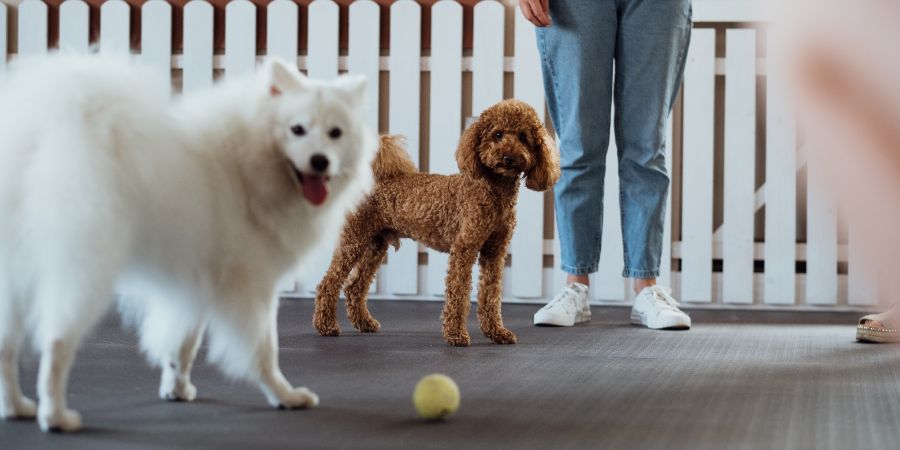
Skill #15: Compassion and Empathy
What This Is
Compassion is the ability to understand the suffering of others, and to feel empathy for their situation. Empathy, on the other hand, is the ability to understand and share the feelings of another person.
Why You Need This Skill as a Dog Trainer
As a dog trainer, it’s important that you have compassion and empathy for your clients and their dogs. After all, you’ll be working with a lot of people who are struggling to train their dogs – often because they’re dealing with behavior problems that are causing them a lot of stress.
What’s more, you’ll also be working with dogs who may have been through a lot in their lives. It’s important that you’re able to understand their situation, and to have compassion for what they’re going through.
How To Develop This Skill
If you want to develop this skill, there are a few things you can do:
- Put yourself in their shoes – One of the best ways to develop compassion and empathy is by putting yourself in the shoes of your clients and their dogs. Try to see things from their perspective, and to understand what they’re going through.
- Listen to their stories – Another great way to develop this skill is by listening to the stories of your clients and their dogs. This will help you to understand their experiences, and to feel empathy for what they’ve been through.
- Make an effort to understand their feelings – Finally, it’s important to make an effort to understand the feelings of your clients and their dogs. This means trying to see things from their perspective, and to feel what they’re feeling.
Skill #16: The Ability to Motivate Others
What This Is
The ability to motivate others is the capacity to inspire other people to take action. This can include things like encouraging them to reach their goals, or helping them to overcome challenges.
Why You Need This Skill as a Dog Trainer
As a dog trainer, you’ll often need to motivate your clients to keep working with their dogs, even when they’re struggling. After all, training a dog can be a long and difficult process – one that requires a lot of time, patience, and effort. And if you’re not capable of inspiring your clients to keep going, what’s the point in them working with you?
Chances are, they won’t book any future sessions and will instead go with another trainer.
Therefore, it’s important that you’re able to motivate your clients to keep going and to keep showing up to their sessions, even when they feel like giving up. This will help them to see the results they want – and it’ll also help you to build a strong relationship with them.
How To Develop This Skill
If you want to develop this skill, there are a few things you can do:
- Find out what motivates them – One of the best ways to motivate your clients is by finding out what motivates them. What are their goals? What do they hope to achieve by working with you? When you know the answers to these questions, you’ll be able to tailor your sessions to their needs and help them to stay motivated.
- Encourage them to set goals – Another great way to motivate your clients is by encouraging them to set goals. This will give them something to work towards, and it’ll help to keep them focused on the future.
- Help them to overcome challenges – Finally, it’s important to help your clients to overcome any challenges they’re facing. This could involve things like helping them to deal with setbacks, or teaching them how to persevere when things get tough.
Skill #17: Working Well Under Pressure
What This Is
Working well under pressure is the ability to stay calm and focused in stressful situations. This can include things like deadline pressure, working with difficult clients, or trying to train a dog who’s proving to be a challenge.
Why You Need This Skill as a Dog Trainer
This is the kind of job where you’ll often find yourself in stressful situations. After all, you’ll be working with a lot of different people, and each one will come with their own unique challenges and goals. Not to mention, you’ll also be dealing with dogs who may have behavioral problems.
Therefore, it’s important that you’re able to work well under pressure. This will help you to stay calm and focused in the face of challenging situations, and it’ll also allow you to provide your clients with the best possible service.
How To Develop This Skill
- Learn how to manage your time – One of the best ways to reduce stress is by learning how to manage your time, as we already discussed back in Skill #12. This means setting aside enough time for each client, and making sure that you’re not overbooking yourself.
- Create a support network – Another great way to reduce stress is by creating a support network of other dog trainers. This way, you can rely on them for advice, help, and support when things get tough.
- Take breaks – Next, it’s important to take breaks when you’re feeling stressed. This could involve things like going for a walk, taking a few deep breaths, or listening to calming music.
- Take time off when needed – Finally, don’t be afraid to take time off when you’re feeling overwhelmed. This will help you to recharge and come back feeling refreshed and ready to tackle whatever comes your way!
If you want to develop this skill, there are a few things you can do:
Skill #18: Outstanding Customer Service Skills
What This Is
Outstanding customer service skills is the ability to provide an excellent level of service to your clients. This includes things like being friendly, helpful, reliable, and efficient.
Why You Need This Skill as a Dog Trainer
Remember how we talked about the importance of building relationships with your clients back in Skill #16? Well, outstanding customer service is one of the best ways to do that.
Think about it – would you rather work with someone who’s friendly and helpful, or someone who’s rude and unprofessional?
The answer is pretty obvious! Therefore, it’s important that you’re able to provide an excellent level of customer service to your clients. This will help you to build strong relationships with them. Furthermore, it’ll also make them more likely to recommend you to others and leave positive testimonials for your business!
How To Develop This Skill
If you want to develop this skill, there are a few things you can do:
- Put yourself in your client’s shoes – This ties back to our discussion of being compassionate and empathetic. One of the best ways to provide excellent customer service is by putting yourself in your client’s shoes. This means trying to see things from their perspective, and understanding what they need and want from you.
- Always be polite and professional – Another important thing to remember is to always be polite and professional. This means using please and thank you, avoiding profanity, and keeping your cool – even when things get challenging.
- Communicate effectively – It’s also important to communicate effectively with your clients. This means being clear and concise in your communication, and making sure that you’re always on the same page.
- Listen to your clients – Finally, it’s important to listen to your clients. This means taking the time to understand their needs, and then doing your best to meet them. This also applies to situations where clients may provide constructive feedback for you or your business, or leave a negative review.
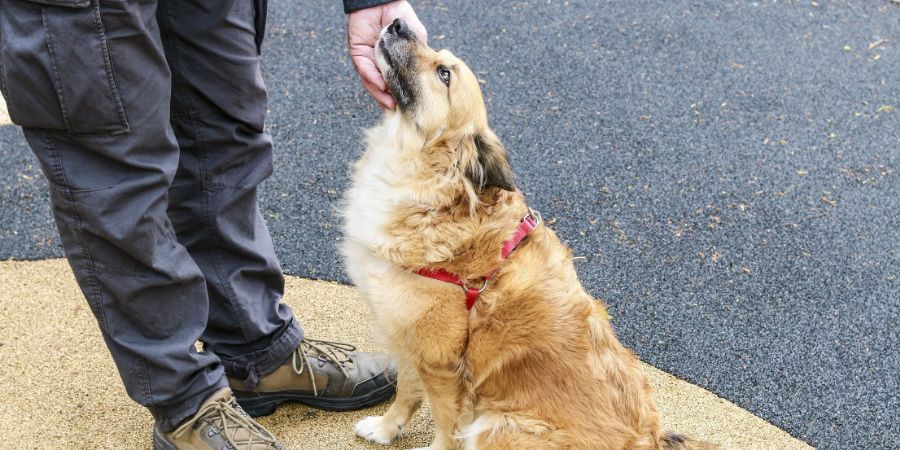
Skill #19: Ability To Learn On The Job
What This Is
The ability to learn on the job is just as it sounds – being able to quickly learn new things, and put them into practice.
Why You Need This Skill as a Dog Trainer
As a dog trainer, you’ll need to constantly be learning new things – just like your clients and their pups. Whether it’s learning about different training techniques, keeping up with the latest research, or learning about new dog breeds – it’s important that you’re able to quickly learn new information and put it into practice.
How To Develop This Skill
If you want to develop this skill, there are a few things you can do:
- Create a learning plan – One of the best ways to develop this skill is by creating a learning plan. This means taking the time to sit down and figure out what you want to learn, and then creating a plan for how you’re going to go about learning it. This could involve things like setting aside time each week to read about different training techniques, signing up for online courses, or attending seminars and workshops.
- Make it a habit – Once you have a learning plan in place, it’s important to make learning new things a habit. This means setting aside time each week to focus on learning, and making it a priority in your life.
- Be open to new things – It’s also important to be open to new things. This means being willing to try new things, and not being afraid to step outside of your comfort zone.
Skill #20: Must Love Dogs
What This Is
Last but not least, one of the most important skills you need to become a successful dog trainer is a love for dogs!
Why You Need This Skill as a Dog Trainer
This should go without saying, but if you’re going to be working with dogs all day – you need to love them! Dogs can sense when someone doesn’t like them, and they’re likely to react accordingly. Thus, it’s important that you genuinely enjoy being around dogs, and that you have a passion for working with them.
How To Develop This Skill
If – for some reason – you want to be a professional dog trainer but aren’t inherently crazy about dogs, here are some things you can do to boost your love for them:
- Spend time around dogs – One of the best ways to develop a love for dogs is to simply spend time around them. This could involve things like volunteering at a local shelter, dog-sitting for friends and family, or going to the dog park on a regular basis.
- Get to know them – Another way to develop a love for dogs is to take the time to get to know them. This means learning about their individual personalities, and figuring out what makes them tick. Once you have a better understanding of who they are, it’ll be easier to develop a bond with them.
- Treat them well – Finally, it’s important to treat dogs well. This means being gentle and patient with them, and taking the time to build a trusting relationship. When you treat a dog with respect and kindness, you’ll be amazed at the kind of company they can keep!
Skills Needed To Be a Dog Trainer: Operating Your Own Business
In addition to the 20 skills you need to become a dog trainer that we just listed above, it’s important to mention that if you’re going to be operating your own dog training business – there are a few additional skills you’ll need to be successful.
These include:
- Business acumen – When you’re running your own business, it’s important to have a strong understanding of things like marketing, finances, and accounting. This will allow you to make smart decisions about things like pricing, advertising, and budgeting.
- People skills – In addition to being good with dogs, it’s also important to be good with people. This means having strong communication and customer service skills. After all, a large part of your job will be dealing with clients!
- Organizational skills – Next, it’s important to be organized when you’re running your own business. This means having a system in place for things like scheduling, record-keeping, and invoicing.
- Marketing skills – Having good marketing skills will also be a critical part of running your own dog training business. For instance, you’ll need to know how to promote your business, advertise it, get yourself a website and on social media, and get the word out about what you do.
- An entrepreneurial spirit – Finally, it takes a certain kind of person to be successful in business. This includes being self-motivated, driven, and passionate about what you do. If you don’t have an entrepreneurial spirit, it may be difficult to make your business a success.
What Education Do You Need To Be a Dog Trainer?
While there are no formal education requirements to become a dog trainer, completing a training program is STRONGLY recommended if you actually want to be successful. This is because getting professionally trained will give you the skills and knowledge needed to do your job right, run a thriving business, and attract/keep more clientele.
There are a number of different dog training programs available, but not all of them are created equal. When choosing a program, it’s important to make sure that it’s accredited, and that it offers a curriculum that’s comprehensive and up-to-date.
Additionally, you’ll want to make sure that the program you choose provides hands-on training opportunities. This is important because it will allow you to gain the confidence and experience needed to actually be successful in your career.
QC Pet Studies’ Online Dog Training Course
QC Pet Studies is a subsidiary of QC Career School – a pioneer of online learning since 1984! All of our courses are 100% self-paced, online, and globally-recognized. Beginning on the date you enroll, you’ll be given 2 full years to complete your training. However, you can use as much or as little of that time as you need.
For reference, many QC graduates have found that by devoting a mere 1-2 hours per week to their studies, they were able to complete their program and earn their internationally-recognized certification(s) in as little as 3-6 months!
QC Pet Studies’ Dog Training Course is made up of 5 section:
Section 1: Introductory Units
What you’ll learn in this section:
- The guiding principles of dog training
- Safe training fundamentals
- Ethology
- The stages of development
- Socialization stages for dogs
- Canine communication and behavior
- Fear responses and calming signals
- Problem-solving techniques
- Learning theory and how to apply it successfully
Section 2: Applying Training Principles
What you’ll learn in this section:
- Training methods (a.k.a. luring, shaping, targeting, modelling, capturing, and mimicry)
- Canine motivations
- What reinforcement schedules are and how to develop them
- Training tools for dogs
- How to address unwanted behaviors
Section 3: Teaching People
What you’ll learn in this section:
- How to work as a professional dog trainer
- How to properly teach clients
- Private lessons vs. group lessons
- Effective teaching skills
- How to come up with strategies for teaching people
- Properly communicating with dog owners
- The prep work you must do before working with clients
Section 4: Starting Your Dog Training Business
What you’ll learn in this section:
- How to get your business started/running
- How to choose the right business name (and get it registered)
- Various business insurance requirements and recommendations
- How to create a business plan for your dog training business
- Marketing techniques and strategies
- How to successfully sell your dog training services
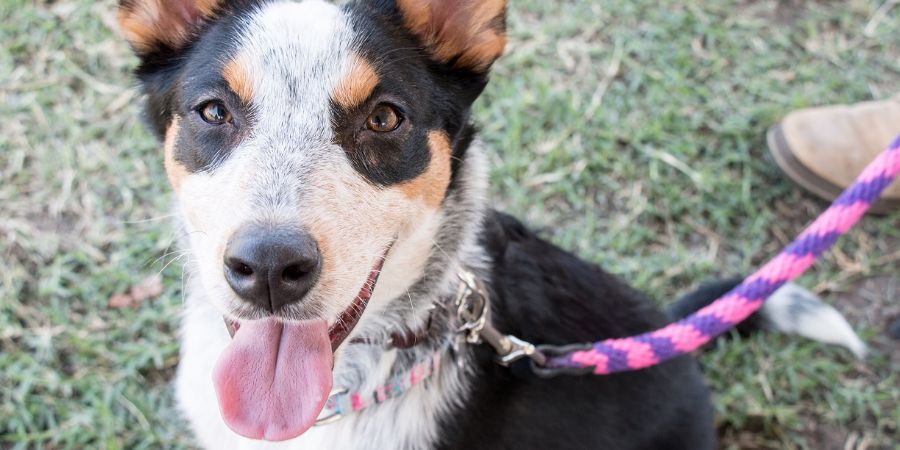
BONUS Training: CPDT Exam Prep (Optional)
This is an optional, but highly recommended, bonus section of QC’s Dog Training Course for anyone planning to take the Certification Council for Professional Dog Trainers (CPDT) exam. This professional certification is recognized worldwide as the gold standard in dog training.
Dog trainers who earn their CPDT certification have a significant advantage over those who don’t. Specifically, they’re able to command higher fees and are far more likely to be hired by clients. CPDT-certified dog trainers also have access to a number of exclusive resources and networking opportunities.
In order to take the CCPDT exam, you must first meet their eligibility requirements, which include:
- A minimum of 300 hours of professional dog training experience
- A minimum of 30 documented continuing education (CEU) credits
- Proof of liability insurance
If you don’t yet meet these requirements, don’t worry! You can still enroll in QC’s Dog Training Course and use the time to gain the necessary experience and CEUs. Then, when you’re ready, you can come back and complete this optional unit so you can prepare yourself for the CPDT exam!
So, Do YOU Have The Qualities Needed To Be a Dog Trainer?
Becoming a professional dog trainer requires a unique combination of skills, qualities, and knowledge. With the right mix of these things, you can be successful in this amazing career – and especially if you possess the 20 skills discussed in this article!
If you’re feeling motivated to start your dog training career but don’t yet have all the skills needed, consider enrolling in QC Pet Studies’ Dog Training Course! It’s an affordable, flexible, and comprehensive online program that’ll give you the skills and confidence you need to start your business and succeed as a professional dog trainer… Plus, a globally-recognized International Dog Training Professional™ (IDTP™) certification to add to your resume and portfolio!
